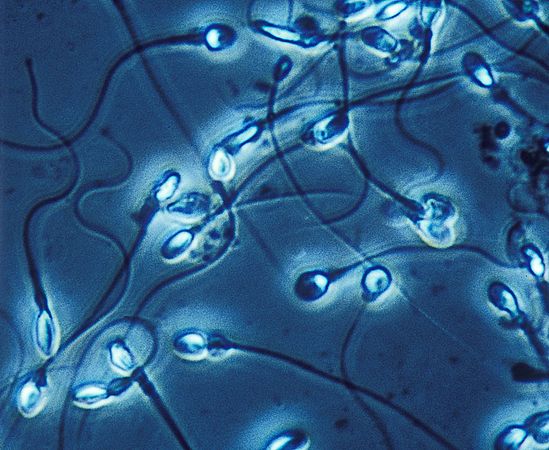Azospermia and TESE
What is Azospermia?
Azospermia refers to the absence of sperm in the semen and occurs in approximately 15% of men with infertility problems. To diagnose this, at least two sperm samples must be centrifuged and examined. In cases where azospermia appears to be present under direct observation, sperm may still be found in the pellet after centrifugation, even if only a few, and these can be used for microinjection. This prevents the unnecessary Testicular Sperm Extraction (TESE) procedure.

What are the Types of Azospermia?
Azospermia is classified into two groups based on whether the sperm ducts after the testes are obstructed or open:
- Obstructive Azospermia: In cases of ductal obstruction (40%), sperm production occurs, but no sperm can be found in the ejaculate. This may be due to congenital causes or result from surgical complications or trauma.
- Non-Obstructive Azospermia: If azospermia is present with open ducts, it indicates testicular failure. Sperm production does not occur due to testicular defect or hormonal deficiencies.
In the presence of azospermia, the man should undergo hormonal testing and chromosomal analysis. The chromosomal abnormality rate is 15%, with the most common condition being Klinefelter Syndrome.
How is Azospermia Treated?
In the case of azospermia, surgical methods are employed to try and retrieve sperm. These methods include PESA, TESA, and TESE.
- PESA (Percutaneous Epididymal Sperm Aspiration): In this procedure, sperm is aspirated from the epididymis using a fine needle. It is used in obstructive azospermia cases.
- TESA (Testicular Sperm Aspiration): Here, sperm is aspirated from the testes using a needle, without cutting the testis skin.
- TESE (Testicular Sperm Extraction): If sperm cannot be retrieved using PESA and TESA, TESE is performed. Under a microscope, small pieces of the testicular tissue are taken from areas where sperm production is most likely, and sperm is searched for in the lab. This procedure can be performed under local anesthesia, but general anesthesia can also be used. It is a procedure that can be easily performed in our clinic, and patients can return home on the same day. When sperm is found using TESE, it is immediately used, and the woman is simultaneously prepared for egg collection through ovarian stimulation therapy. In the MicroTESE method, very small samples are taken, and once sperm is found, the procedure is concluded, minimizing damage to the testes and tissue loss. This method allows sperm retrieval in about 50% of cases.
Post-MicroTESE Care:
- After the MicroTESE procedure, patients are monitored until the effects of anesthesia wear off and then sent home.
- Continuous bed rest is not necessary at home, but normal activity should be reduced for two to three days after the procedure.
- A dressing should be applied 48 hours after the surgery.
- A shower can be taken three days after the procedure, and the stitches will dissolve on their own within about a week, so no stitch removal is needed.
- Patients are advised to wear tight underwear for 10-15 days post-operation.
- Heavy physical activity and sexual intercourse should be avoided for approximately 15 days.

